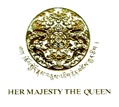

 SANCTUARY: Global Oases of
Innocence lovingly addresses the
convergence of conservation biology, ecological
sciences, animal rights and public policy,
occurring throughout the world. With over 114,000
protected areas on earth, human endeavours to
protect sacred places have spawned an
environmental and spiritual renaissance.
SANCTUARY profiles dedicated
examples of that remarkable collective passion and
suggests that our need to revere and celebrate
nature may be a key to our survival as a species.
Beginning with the world’s largest protected area
that spans contiguous portions of Alaska and
Canada and continuing with profiles of
extraordinary individuals and their work in 19
other nations, SANCTUARY offers a
singular vision of a world at peace ecologically.
SANCTUARY: Global Oases of
Innocence lovingly addresses the
convergence of conservation biology, ecological
sciences, animal rights and public policy,
occurring throughout the world. With over 114,000
protected areas on earth, human endeavours to
protect sacred places have spawned an
environmental and spiritual renaissance.
SANCTUARY profiles dedicated
examples of that remarkable collective passion and
suggests that our need to revere and celebrate
nature may be a key to our survival as a species.
Beginning with the world’s largest protected area
that spans contiguous portions of Alaska and
Canada and continuing with profiles of
extraordinary individuals and their work in 19
other nations, SANCTUARY offers a
singular vision of a world at peace ecologically.
Bhutan herself is strikingly emblematic of this
“sanctuary movement.” Bhutan’s visionary Fourth King,
His Majesty Jigme Singye Wangchuck, enshrined over 60%
of the nation as inviolable primeval forest. It is a
land dominated by a cultural commitment to
non-violence, mutual tolerance and respect for all
sentient beings; where the measure of the economy is
not merely per capita earning power, but the degree to
which the nation’s people are enriched by a high
quality of life. Here each and every individual can
find deep and lasting forms of spiritual, as well as
pragmatic sustainability. It is an example for
concerned citizenry and policymakers of the world.
In SANCTUARY, the authors have
chronicled a very special expedition into one of
Bhutan’s most pristine habitats, its newest Wildlife
SANCTUARY in Sakteng. A land inhabited
by mountain people, the Brokpas, whose lives exhibit
many of humanity’s finest qualities: generosity,
community cohesiveness, spiritual integrity and a true
innocence in the form of a deeply abiding connection to
the natural world that has been nurtured by forward
thinking Bhutanese conservation policies. The Brokpa,
like indigenous peoples everywhere, are tied to nature.
The authors point out that conservation can never exist
without engaging the participation of and securing a
future for those closest to the natural world.
Other nations have contributed their own unique visions
of progressive, non-violent conservation.
SANCTUARY looks at the continuing
legacies of such animal welfare luminaries as Brigitte
Bardot, Michael Aufhauser and Gene Baur whose efforts
to strengthen animal protection legislation are
exemplary and indicative of a global sea change. Their
effective voices remind people that nature regards all
creatures as equal and that it is our challenge as a
powerful species to be modest, gentle and compassionate
towards others. This is where conservation biology and
animal welfare must come together to work in favor of
all sentient beings, without discrimination.
In Poland’s exquisite old forest of Bialowieza,
ornithologists have rallied to protect woodpeckers, an
indicator species for the health of dead wood forests
disappearing throughout Europe. In South Africa, Howard
Buffett with his wife Devon struggle to save cheetahs
from extinction, while working to alleviate poverty and
disease and to provide clean drinking water for
millions of people. Sanctuaries in the Nilgiris of
South India, in Indonesian Borneo and on the island of
Socotra in South Yemen, protect both indigenous
peoples, like the Todas and the Dyak, while saving rare
endemic orchids, orangutans and cinnabar trees.
Combining a persuasive overview of animal rights as a
necessary precursor to global conservation initiatives,
SANCTUARY offers methodologies for
merging science and policy with spiritual ecology. With
data gleaned from some of the most exquisite refuges in
the world, Michael Tobias and Jane Morrison provide
blueprints for hope. SANCTUARY
advances the causes of the heart while embracing
methods to ensure that critical habitat and endangered
species are safeguarded. SANCTUARY is
an ambitious and important book. Its authors have
traveled the world in search of many of the most
astonishing, little known and important ambassadors for
conservation and animal welfare. In over 20 countries
they have profiled inspiring examples of what is
working and how good people make a difference.
It is fortuitous that the 2008 Smithsonian Folklife
Festival in Washington, D.C., worked with the Royal
Government of Bhutan to celebrate Bhutanese culture,
history, and conservation at the very moment that this
book officially emerged as part of that Festival. With
Bhutanese conservation being an important hallmark of
this work, we have compelling synchronicity. As Bhutan
herself presents a beacon of conservation for the 21st
century, SANCTUARY: Global Oases of
Innocence celebrates that movement in its
international context.
Not only will SANCTUARY prove
invaluable for policymakers and scientists, but it
should provide inspiration for the next generation of
young ecologists wanting to make a difference in the
world. And it is for readers everywhere who wish to be
reminded that the world of nature is beautiful and
precious; and each of us has the opportunity, everyday,
to help make profound changes that can bring peace and
happiness to all living beings.
I congratulate the authors and deeply appreciate their
extraordinary work.


